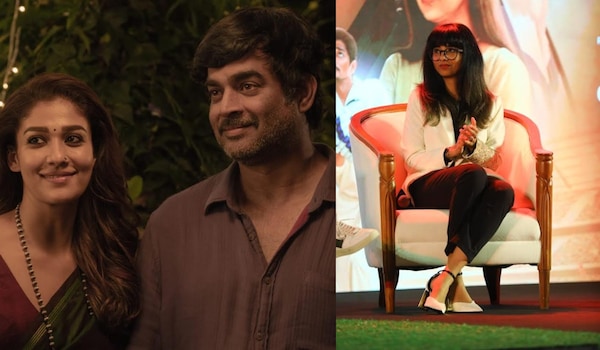Shakthisree Gopalan Interview: On scoring for Test, AR Rahman’s advice and sonic realm being her most easily accessible paintbrush
Shakthisree Gopalan Interview: The singer, who is making her debut as composer with Test, speaks about AR Rahman’s advice on readiness, emphasizes that script is vital to sonic landscape of the film

Last Updated: 10.29 AM, Apr 01, 2025
Third time is the charm, they say. So, when naturally, singer Shakthisree Gopalan was approached by producer-director Sashikanth to compose for films, twice, she turned down, only for her to say yes (with so much thinking) to the third time, which happened to be for Test.
The voice of Shakthisree Gopalan is not new for Tamil cinema, and so is her independent music. But what is new is listening to film music under her compositions. All set to make her debut as music composer with the upcoming Netflix original Test, the singer (an architect by academics) joins OTTplay for a conversation about her journey into the film, and working with another architect, and producer Sashikanth, who is making his directorial debut with Test.
It was Sashikanth who initiated Shakthisree to compose for his film. Shakthisree, who was already creating her own music, was spotted by Sashikanth that she could also do film music. So, when Sashikanth approached Shakthisree to be a music director, and it was an instigated action, the singer recalls, “He had asked me to score for another film a few years ago. I am also an architect, and he (Sashikanth) was guest lecturer/faculty at my college. So, we go back long and I feel there is a language of communication that I feel so privileged to share with him.”
Shakthisree Gopalan Interview: On making the plunge as composer
“I live in a world of sounds and emotions, and feel the sonic realm is the most easily accessible paintbrush to express my feelings. And for Sash (as she fondly calls Sashikanth), it is the other way round, with visuals and colours. I think somewhere in the between, we were able to communicate with each other and find alignment in what we want to create,” says Shakthisree.
Talking about the first time Sashikanth approached her for composing, the singer says that she felt the timing was not right. “A few years later, he again approached me when I was touring at the time. It wasn’t for Test either. But when he finally, reached out to me for Test, and sent me the story, it got me thinking. The last few pages were very gripping. It was super awesome, that I even dissuaded him to approach other composers,” she adds.
Even as Shakthisree took the plunge to score for Test, she says that she did feel she was not ready, because a song is very different from creating an album and scoring for a whole world that the movie is created with. “There is a fabric for each film on which the entire story is happening, the aesthetics of filmmaker and the vision. There is huge component gone out of this shared collaborative energy.”
AR Rahman’s piece of advice to Shakthisree
Getting candid that she did not feel ready even at the third opportunity to score for a film, Shakthisree reveals she met AR Rahman soon after she read the story. “As I was reading it, I was able to hear and feel it so intensely. When I met Rahman sir about the opportunity and how I feel charged but not ready, he said that sometime you cannot wait to be ready and one has to just do it.” Shakthisree says that one has to walk the path, when in fact she was suggesting Sashikanth to go with AR Rahman’s score, while the later persuaded Shakthisree to do the plunge as composer.
As a recording artist, Shakthisree says that the song is almost always already there even not in the fullest form, in the studio. “I have been making my own music as independent artist for some years, and producing, writing them. But they have been extensions of my own expressions, and cathartic of my lived experiences. But with the challenge here is that the storytelling is Sash, and there is a voice, tone and aesthetic. The music should be in alignment with what he has taken, the characters and the nuances. The biggest source for all of the music is the script, and all details Sash has distilled into the characters.”
The musician goes on to say that the script is the biggest resource, enriched with details, that worked as the fodder for score. “We were finding our way through it, and finding the colours of the world through sound. We had a sonic mood board, of how Test would sound like,” Shakthisree concludes.

 Premium
Premium